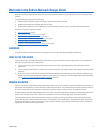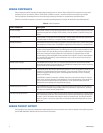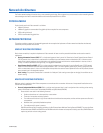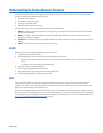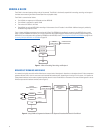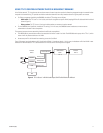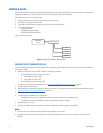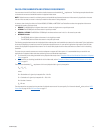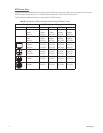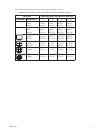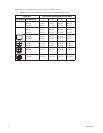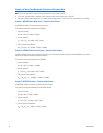
C1640M-B (3/06) 13
CALCULATING BANDWIDTH AND STORAGE REQUIREMENTS
You must ensure that the B and C blocks are able to handle the worse-case bandwidth (B
WC
) requirements. The following examples describe how
to calculate the worse-case bandwidth based on the playback video stream.
In contrast, when viewing live video, the Endura WS5050, VCD5000, and NET5301R use EnduraView to select the appropriate video stream
automatically based on the layout mode.
• WS5050: The WS5050 pulls the highest value stream in either the single camera or quad layout mode.
• VCD5000: The VCD5000 pulls the lowest stream in quad layout mode.
• WS5050 or VCD5000: The WS5050 or VCD5000 pulls the lowest value stream in the 9- or 16-camera layout mode.
• NET5301R Encoder:
– The NET5301R pulls the highest value stream in the single layout mode.
– The NET5301R pulls the lowest value stream in the quad layout mode.
The following examples demonstrate that the playback video mode requires more bandwidth than does the live video mode. Typical applications
do not require displaying the maximum amount of simultaneous playback streams. A more realistic application might require more live video
streams are displayed than playback video streams. For this reason both playback and live video calculations are shown to aid in calculating
bandwidth.
To ensure that your network resources are more than adequate to support the Endura system, it is recommended that you use the bit rate
applicable for the playback video mode when calculating worse-case bandwidth requirements.
• For information on calculating bandwidth for the playback video mode, refer to Examples of Worse-Case Bandwidth Calculation in Playback
Mode on page 20.
• For information on calculating bandwidth for the live video mode, refer to Examples of Worse-Case Bandwidth Calculation in Live Video
Mode on page 21.
The worse-case bandwidth, B
WC
, requirements for live and playback video is given by the equation:
B
WC
= B
W
+ O
H
where:
B
W
= Bandwidth and is given by the equation: B
W
= N
S
x B
R.
O
H
= Overhead and is given by the equation O
H
= 25% x B
W .
N
S
= Number of streams.
B
R
= Bit rate
The above equations are general and assume that all playback streams are of the same quality. For information about B
R
values, refer to NTSC
Frame Rates on page 14 and PAL Frame Rates on page 17.
NOTE: Playback steams are used for calculating worse-case bandwidth requirements because each video stream is played back at the same
rate that it was recorded, no matter in what layout mode the video stream is being displayed.



